Artist’s treechange in Seppeltsfield, Barossa Valley, SA
How an artist built this Barossa Valley garden from scratch.
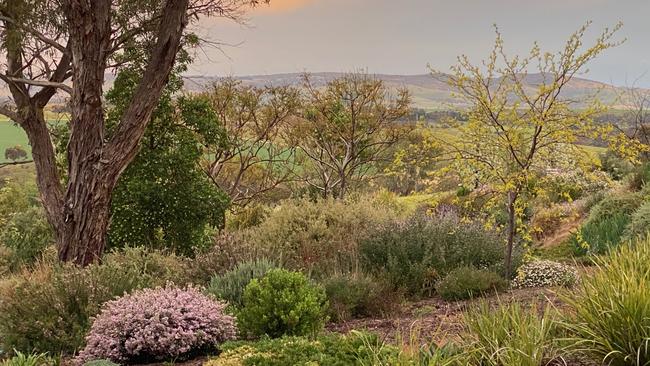
Beryl Hunter swapped city life in Adelaide for a slower, quieter existence when she and her husband Craig bought their place at Seppeltsfield in South Australia’s Barossa Valley wine region in 2011.
With their children at university, Beryl, an artist, found “the noise and busyness were not what I wanted any more”. Inspired by watching episodes of Escape to the Country, she started planning her own tree-change. The Barossa was a familiar area but instead of the small acreage they sought, the couple ended up buying a 16ha property, seduced by its stunning location and views. The house (which Craig liked and Beryl didn’t) sits on a hill looking over vineyards.
“There was minimal landscaping around the house, and all the land sloped,” recalls Beryl. “I stood there and thought, ‘This needs a garden’ but I wasn’t sure where to start. So we divided it into manageable bits and started chipping away at it.” Pathways formed what Beryl call “the bones” of the garden and created different areas such as the petanque court and the firepit area to draw people outside. “We use these a lot when friends come to visit,” she says. “I believe a garden is to live in, not look at.”
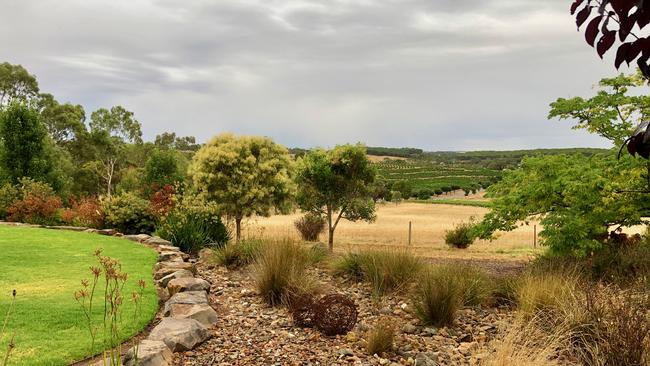
To help stop soil washing down the slope in heavy rain, they built a series of small retention ponds along the contour lines, which slow and hold water. The rock for these came from a local quarry so it blends perfectly into the landscape. Beryl planted them and other occasional watercourses with textural grasses, many indigenous to the region. “I’m a big lover of strappy plants like Lomandra, Poa, Pennisetum and Isolepsis,” she says. “I love drawing them too.” She has an artist’s studio in the garden, behind which are their raised vegetable beds.
At first, the only trees were a few eucalypts. “I quickly realised we needed to get trees in to make a different microclimate – it was really hot and exposed,” says Beryl. They planted trees they knew were tough – crepe myrtle, Chinese pistachio, Gleditsia, jacaranda and golden rain tree (Koelreuteria). Craig ran kilometres of irrigation pipe to water the trees while they established. Smaller plants were added according to what was tough, available locally and in large quantities, and cost effective.
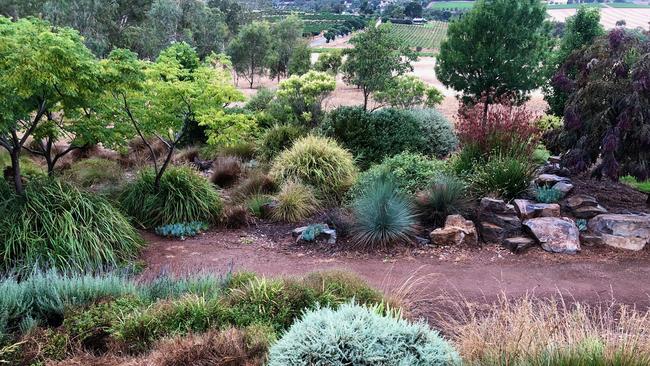
Beryl’s best performers include coastal rosemary (Westringia), rosemary, lavender, correas, emu bush (Eremophila) and succulents. She’s currently adding grevilleas, leucadendrons and proteas for their flowers, planted in the odd gravelly and sandy spots she has discovered.
Creating a large, level lawn area was a second major project. “It really changed the outlook to have something green near the house,” Beryl says. “Actually, the whole garden has made such a difference to the microclimate and the birds and animals that come here.”
With Craig looking forward to retirement, they’re now re-vegetating the native scrub on the hill. “We just enjoy it – we go up there to watch the sunset and observe the ’roos, birds and microbats,” Beryl says. “This is a beautiful place to live and you wake up every day feeling like you’re on holiday.”
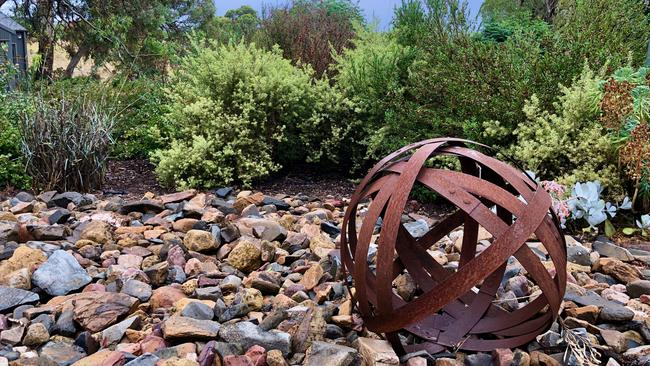
Q&A
Why do the blooms of my usually brilliant white ‘Iceberg’ rose turn pink in autumn?
Margaret Osborne, Tasmania
This rose can develop pink hues when nights become cold. A pink “sport” of ‘Iceberg’, discovered in Tasmania, was propagated to become the variety ‘Blushing Pink Iceberg’, so some variation is possible. Spotty pink colouring is caused by fungal attack.
Of my three citrus trees, the orange has snails all over the trunk, branches and leaves. Any suggestions for a remedy?
Peter Russell, Camden, NSW
Copper barrier tape around the trunk will stop snails crawling up. For snails already in the tree, either pick them off by hand or spray with a double-strength coffee solution. Note, this spray might also affect beneficial insects.
With self-watering pots, how often should I change the water and soil? Can I use compost as well as or instead of potting mix?
Gerard Holmes, Victoria
Self-watering pots provide sub-irrigation from a water reservoir at the base. They’re best for plants that like constantly moist soil. If growing vegies, empty and wash the whole pot at season’s end, removing roots that have grown down into the reservoir. Fertiliser salts can build up in the reservoir water. You can re-use potting mix if it hasn’t gone sludgy and plants were not diseased. Refresh the mix by adding compost and fertiliser. Combining compost with potting mix is probably better than using it on its own. Stagnant water in the reservoir allows mosquitoes to breed, so flush regularly and cover access holes with fine mesh.
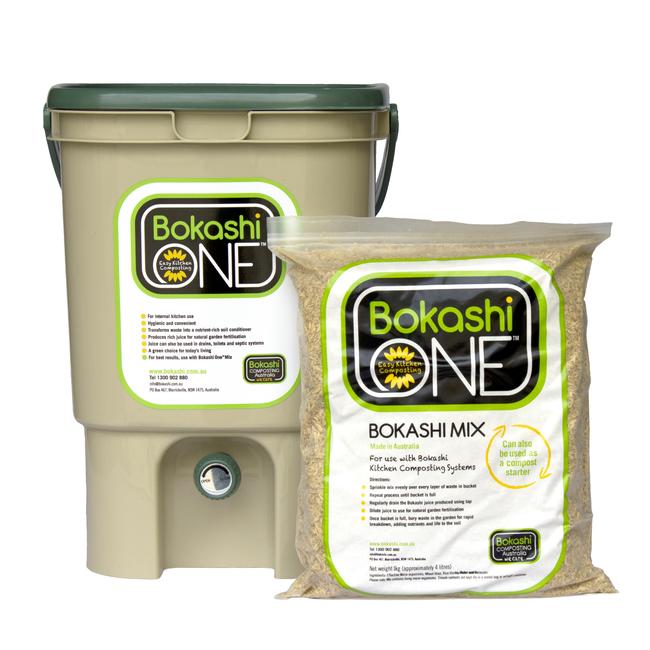
Send your questions to: helenyoungtwig@gmail.com or Helen Young, PO Box 3098, Willoughby North, NSW 2068. Website: helenyoung.com.au. The best question for April wins a Bokashi One Starter Pack worth $196 for hygienic composting in the kitchen, containing two buckets and 2kg of mix; bokashi.com.au


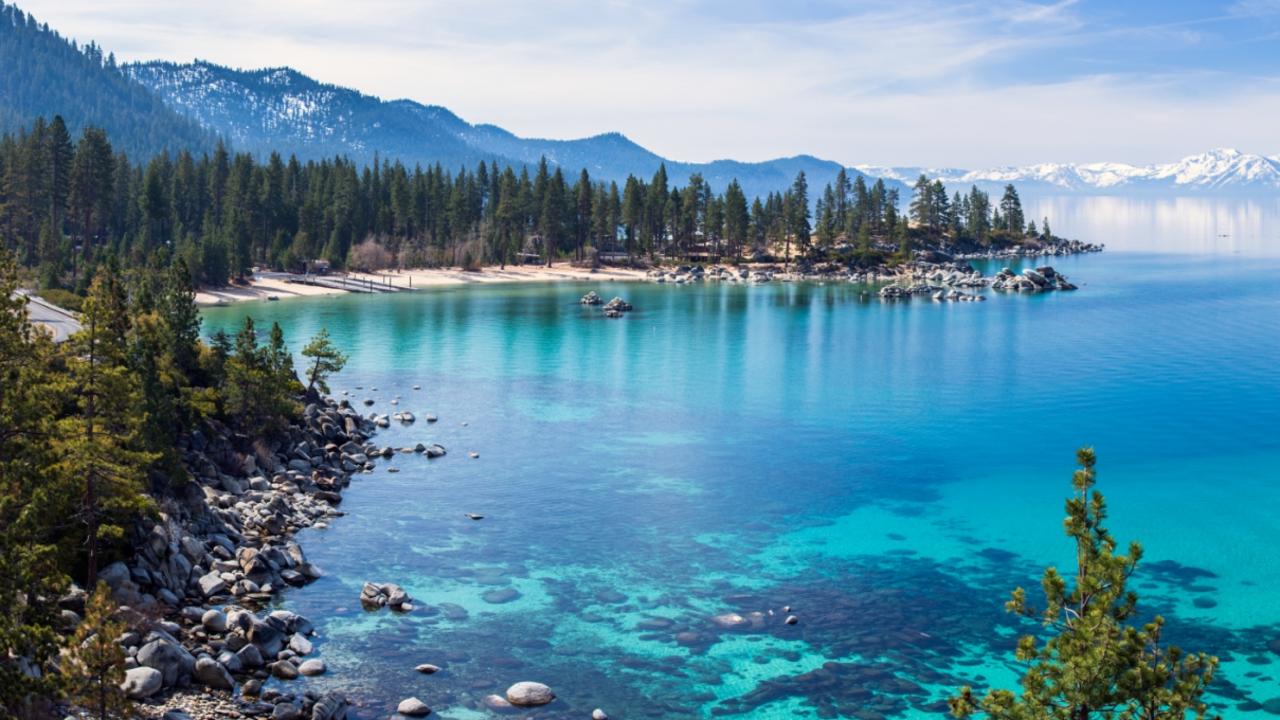
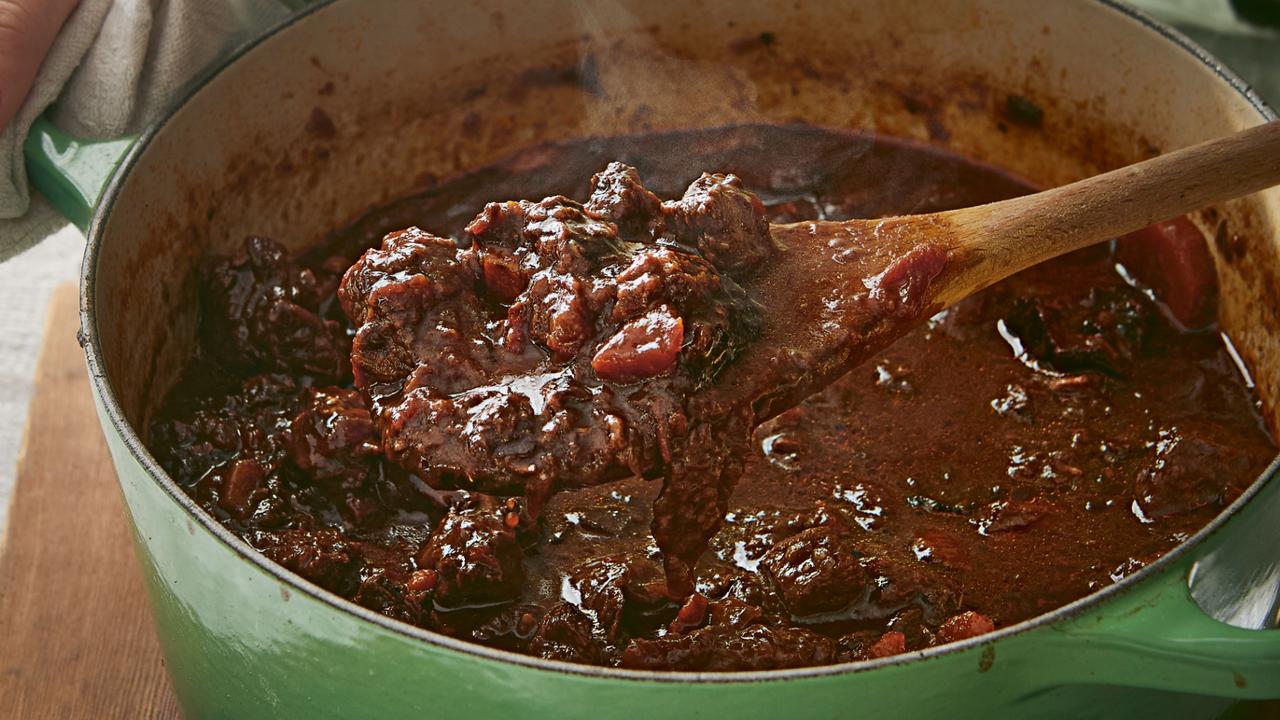
To join the conversation, please log in. Don't have an account? Register
Join the conversation, you are commenting as Logout